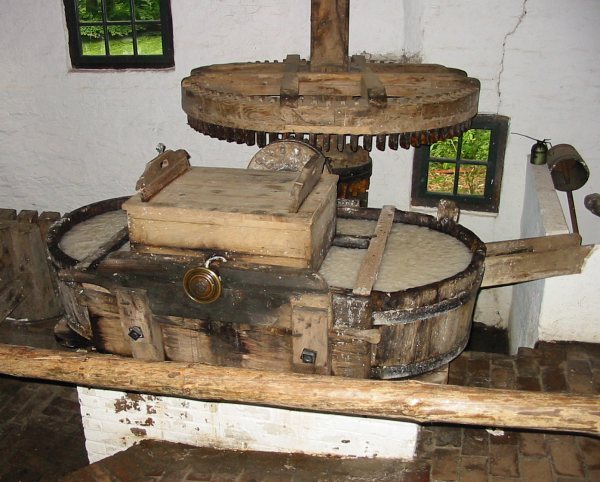These days there's a lot of talk of going "paperless." Why? Because paper clutters things up. We have stacks upon stacks of it. Reams sitting, waiting to be used. In my house, there are desks full to bursting with sketches and crayon drawings on paper of all weights and colors and sizes. Need a bookmark? Grab a slip of paper. Need to make a note? Grab a Post-It. Everywhere we look, there it is: paper.
But paper wasn't always so bountiful, nor was it cheap, nor was it made from wood pulp like today's paper usually is. Paper, in Colonial days, was like most things: precious, and coming as a result of much toil.
Important documents were often written on parchment, which is made from lamb skin. That would be what the final version of Declaration of Independence is written on--but not the earlier drafts. No, those were on the same thing most books, newspapers, and correspondence would use--what might have been called rag paper, linen paper, or cotton paper.
The process began with people collecting the materials that would be used. Often old sails and rope from sailboats would be sold to papermakers, to be turned into rag. Never ones to waste, even within a household what cloth that was no longer useful for other tasks would be saved for paper.
 |
Once a papermaker had a large amount of these rags, his apprentices would roll them all up into a ball and pound them to turn them into a pulp with stamping mills. They were washed, dried, and stored for later use. Once its time came, the rag pulp would be mixed with water and stirred constantly so that the pulp didn't settle onto the bottom of the vat.
The next step would be to take a wooden frame with a metal mesh or grill attached to it and lower it into the vat.
This screen was dipped into the mixture and carefully lifted again, bringing with it a thin layer of the slurry. The molds would be leaned against horns to allow the excess water to drain off and the material to solidify. These sheets of wet paper would then be turned out onto felt to dry completely. After that, the paper would be polished.
Most early paper was cream or darker, sometimes gray. The whiter the paper, the higher quality it was considered.
From the mill, the paper would travel to stationers and people all over--just waiting to receive the ink that usually didn't last nearly as long as the paper onto which it was put. Rag paper is incredibly strong, hard to tear when dry--and though it can be torn when wet, you can mend it, and it will be as strong as ever when it dries again.
Photo credit - "Hollander" by Original uploader was Hdekroon at nl.wikipedia - Originally from nl.wikipedia; description page is/was here.. Licensed under CC BY-SA 3.0 via Wikimedia Commons - https://commons.wikimedia.org/wiki/File:Hollander.jpg#/media/File:Hollander.jpg


We made paper in 4-H several years ago. It was a fun project! The kids loved it. It was messy but the finished paper was cool.
ReplyDeleteThat would definitely be a fun project with my kids. =)
DeleteWow, that is very interesting.
ReplyDeleteBlessings, Tina
This was very interesting and informative. I enjoyed it. Thanks, Maxie
ReplyDelete> mac262(at)me(dot)com <
Good point, the ropes from ships were made from hemp fiber which was also used to make paper. The British required colonial farmers to grow hemp since it was needed in the shipbuilding industry.
ReplyDeleteInteresting report,
Karen Rink
Yep, I was surprised to learn that, but it made total sense!
DeleteInteresting read
ReplyDeleteI have always loved handmade paper. I didn't know that rag paper could be mended when torn. Thank you for an informative post.
ReplyDeleteI didn't either, until I did the research!
DeleteGreat post, Ro! I was looking into this a few years back for some reason and they mentioned that the British were watchful of paper production and I think there were limits on it. There certainly was on printing--which the colonials rebelled against. I love homemade paper and I remember back in the day when your resume needed to be printed on paper with "high rag content" but I don't think they meant it at that time but it was an expression they still used--not sure.
ReplyDeleteSure enough they STILL use rag content paper today including up to 100% cotton content. Wow. I used Crane paper for all my most important stuff like resumes. http://www.felixbirr.com/showcase.html
ReplyDeleteYep! I buy 100% cotton for my important stuff too. =)
Deletereally helped with my research monologue! Thanks!!!!
ReplyDeleteDo you know of anyone who still makes paper this way today professionally? Maybe some studio in Philadelphia, or elsewhere?
ReplyDelete